First News
The Louis is a fine vessel. It was designed to move through thick ice as if it were soft butter. It owes this ability to its round hull and keel-less design. This design is also its failing as far as moving through rough seas, especially when the waves are coming at the vessel from the side. As the ship rolls around in the swells, everything is done in a three-point stance. Walking down the hallway – three-point stance hand on a wall or handrail. Walking down stairs – four points of contact gets it done. Brushing teeth – three-point stance with thigh braced on the sink ('cause you need two hands to get the toothpaste on the toothbrush). I experienced a "full slide" at breakfast this morning. Fortunately my plate was empty, so I got one hand on the coffee cup and one hand on the water glass and me in my chair slid about four feet to right. Only my fork ended up on the floor.
We are finishing up (best we can) the "MK line" which follows 140˚ N. So our course brought us very close to the northern coast of Alaska and gave a great view of the north slopes of the Brooks Range. We will then head northeast to AG-5 (Amundsen Gulf) a station we skipped earlier in the trip because of bad weather. Might not be able to do the CTD rosette cast ironically because of... bad weather. Time will tell on that one. While we were on station yesterday evening, I took a walk around the decks looking for some good sunset photo opportunities. The ship was positioned with the stern into the waves for improved maneuverability during the cast but that meant waves were crashing from behind onto the stern deck. I decided to stay on the upper level – a good call on my part I think. See the photos!
Josh Mitchell from WHOI contributed the following musings about this trip from a different perspective:
Musings of a Mooring Tech
by Josh Mitchell
As I sit aboard the LSSL in the final days of our scientific sojourn to the Arctic realms, I think back to the circumstances that led me here. I am a contractual employee for the WHOI mooring operations group, within the Applied Ocean and Physics Engineering Department. In the scheme of things, I am a relatively new hire and thus have been learning the techniques required to deploy and retrieve some of the most advanced and deepest moorings currently in the world. It's been an opportunity to not only travel to remote corners of the globe, but also to work at the threshold where the aspirations of science meet with the reality of the physical oceanic world.
In a world of PhDs, graduate students, engineers, and software geniuses, I find my entrance into this mix quite fortuitous. Almost 20 years ago, I left the confines of formalized education and traveled to Alaska to try my hand at being a deckhand on a commercial fishing boat. Over the years of working aboard a variety of different boats, in different fisheries, amongst different crew, in ever changing conditions, I learned the fundamentals of what it takes to be a competent and hard working deckhand. Teamwork, reliability, safety, work ethic, and an increased aptitude for discomfort are common characteristics in the world of maritime deckhands. Combine these aforementioned traits with an ability to learn hands-on skill sets, a person can find themselves in some rather adventurous and unique situations.
We live in an age when the acquisition of scientific data combined with the integration of these findings into our lives is of the utmost importance. Being in the presence of scientists who have spent their lives studying the effects of a changing climate, as it relates to physical oceanography, is highly educational and inspiring. While members of my community back at home argue the merits of information as it relates to whether or not the Arctic is melting, I get to hear real-time stories of how these scientists have witnessed substantial changes taking place during the course of their careers. To have the opportunity and ability to assist these scientists in their pursuit for oceanographic knowledge and understanding is something that brings me a great sense of satisfaction.
As the structure of my world plies along the waters of the Arctic Ocean and beyond, I look forward to the experiences that mix the salinity of sweat and the ocean into a platform that provides useful data points for the scientific community for years to come. The great minds that I'm surrounded by both in the labs and on the decks will ensure that as long as funding moves forward, so will our understanding of the ever intertwined changing nature of humanity and climate. I believe it is through these invaluable insights that the potential for growth and development as a species can move forward.
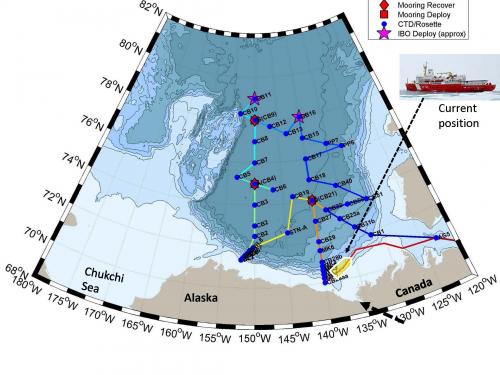 Our location.
Our location.
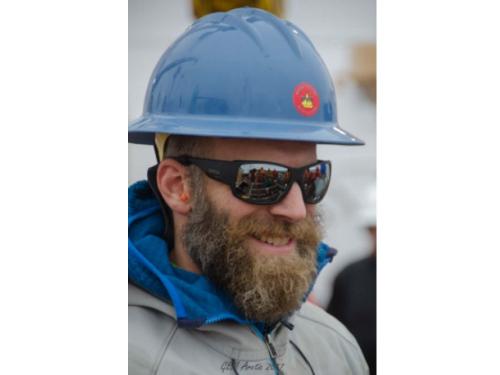 Josh Mitchell a Mooring Technician from WHOI (one of triple Js in “ARMD Triple J” team). Photo by Gary Morgan.
Josh Mitchell a Mooring Technician from WHOI (one of triple Js in “ARMD Triple J” team). Photo by Gary Morgan.
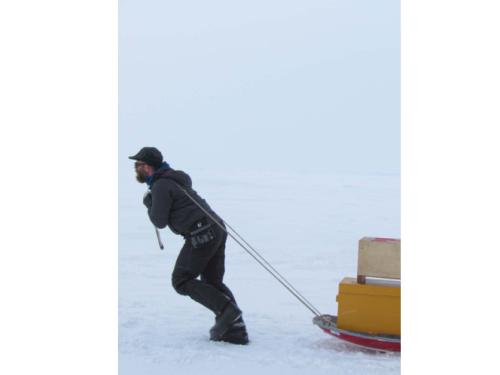 Josh Mitchell a Mooring Technician from WHOI moves a load of equipment for a ice moored buoy station. Photo by David Jones.
Josh Mitchell a Mooring Technician from WHOI moves a load of equipment for a ice moored buoy station. Photo by David Jones.
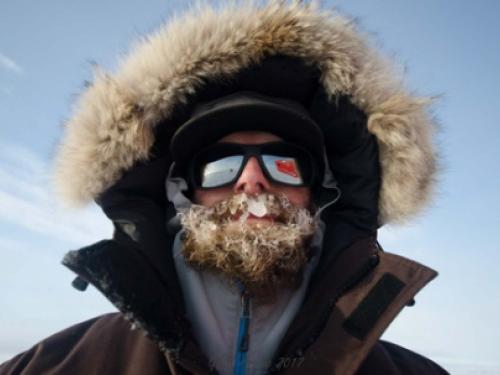 Josh Mitchell a Mooring Technician from WHOI in the cold Arctic sunshine. Photo by Gary Morgan.
Josh Mitchell a Mooring Technician from WHOI in the cold Arctic sunshine. Photo by Gary Morgan.
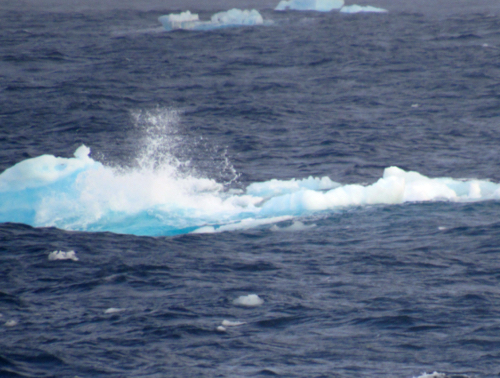 Some blocks of ice adrift in big swells of the Beaufort Sea. Photo by David Jones.
Some blocks of ice adrift in big swells of the Beaufort Sea. Photo by David Jones.
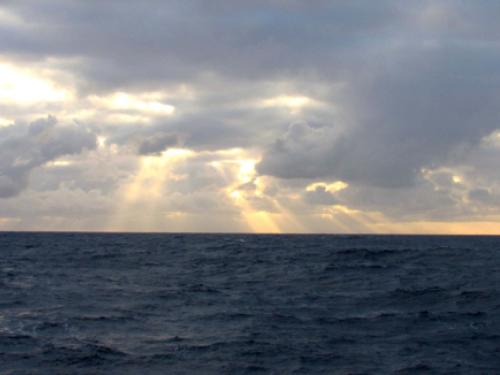 An Arctic afternoon sunny day breaking through clouds. Photo by David Jones.
An Arctic afternoon sunny day breaking through clouds. Photo by David Jones.
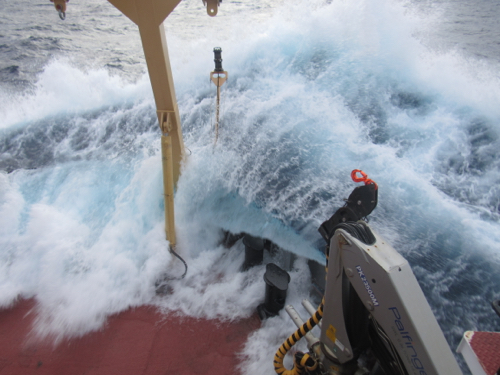 The stern of the Louis S. St. Laurent gets a bath in some big swells. Photo by David Jones.
The stern of the Louis S. St. Laurent gets a bath in some big swells. Photo by David Jones.
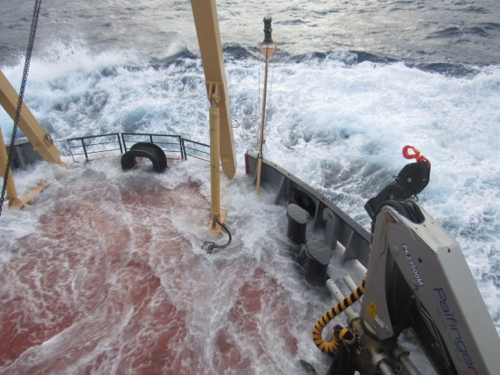 The stern of the Louis S. St. Laurent drains off some water in some big swells. Photo by David Jones.
The stern of the Louis S. St. Laurent drains off some water in some big swells. Photo by David Jones.
 The Northern slopes of the Brooks Range from the last station of "MK Line". Photo by David Jones.
The Northern slopes of the Brooks Range from the last station of "MK Line". Photo by David Jones.

Add new comment